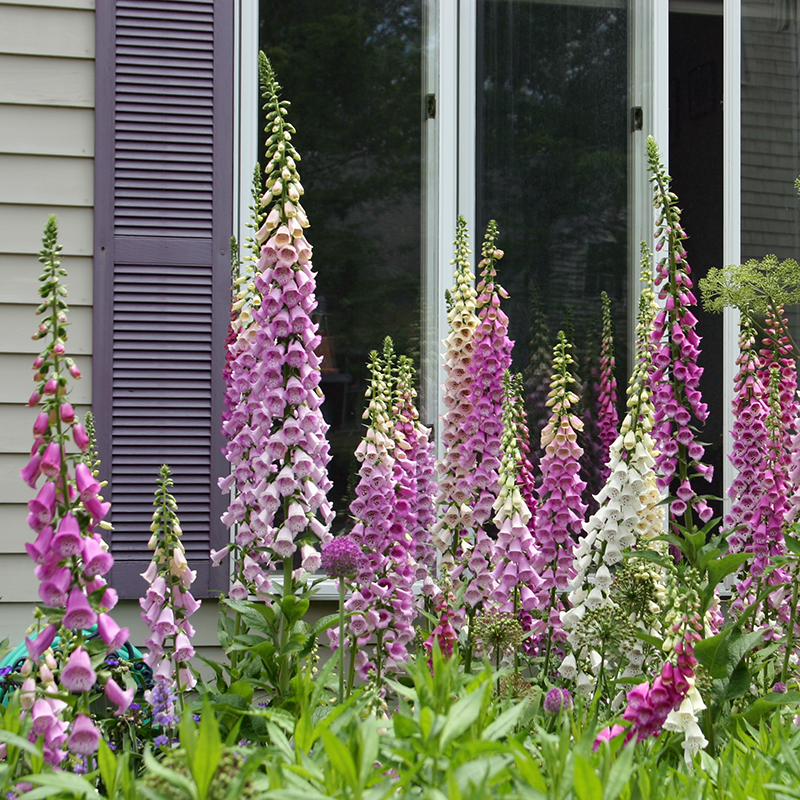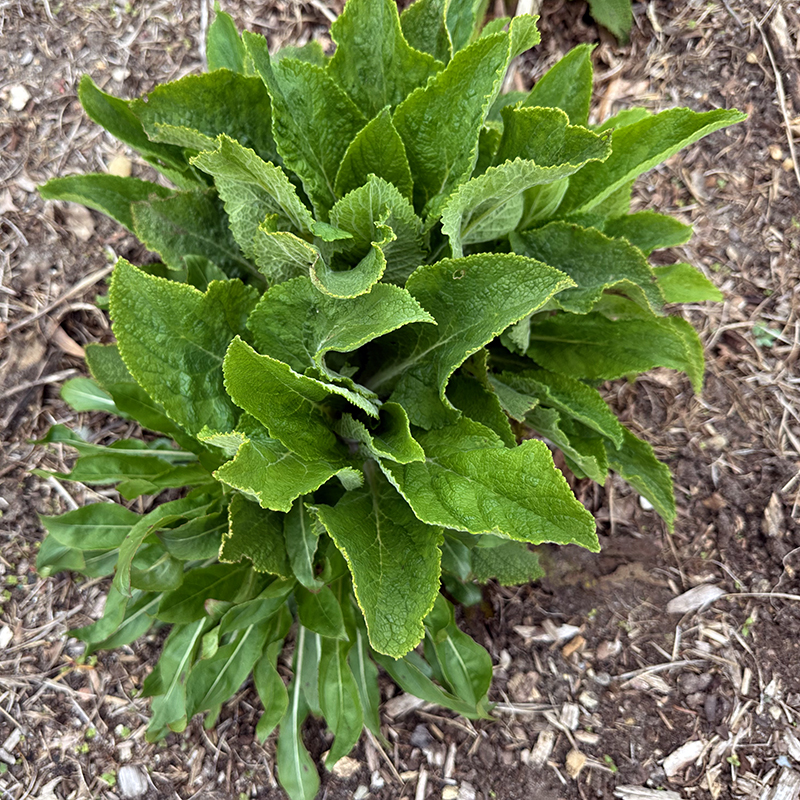It is mid-May in my garden, and a time when biennials, weeds, and perennials are growing fast. It’s also a time when I see posts on social media asking, “Is this a foxglove plant?” I love the biennial foxgloves, and right now they can be seen around my vegetable garden, in my perennial beds, and in the cutting garden. They drop seeds in the fall, sprout and grow the following year, and bloom the next year. So the plants pictured in this blog are going to flower this year in early summer, and around them, right now, are tiny seedlings that will grow the rest of the summer and bloom next year. If you want lots of foxglove (Digitalis purpurea) success depends on not mulching early so that the seedlings can germinate, weeding around the plants that are growing all summer, and often pulling up their look-alike competition.

When a forest of foxglove is in bloom, it’s magical.
My husband would also tell you to transplant them in the fall or spring so that you have foxglove growing everywhere. He thinks every foxglove plant is on wheels, and will move them around when they sprout in places where they can’t really stay. Sometimes I consider changing the name of our property from Poison Ivy Acres to Foxglove Farm.
There are a few weeds that try to pass themselves off as Digitalis, and here are some photos that will help you tell if the plants in your garden are foxgloves or something else.

This is a foxglove growing with curly dock (Rumex crispus). BTW, dock is edible, but foxglove is poisonous.

Another group of self-seeding plants are the verbascum. From the fuzzy leaves of the mullein (Verbascum thapsus) to the darker green Verbascum chaixii pictured here, know that their rosettes tend to be flatter in May as the foxglove foliage is starting to grow more upright.

Our native common evening primrose (Oenothera biennis) is also a biennial that grows one year, blooms the next, and then it dies. You might want to leave some of these in your garden as the yellow flowers are pretty and they support at least one species of native bees.

We grow the native plant Toxicodendron radicans very well on our property, but that’s not why I named it Poison Ivy Acres. The name is explained on my old blog, Whole Life Gardening.


0 Comments